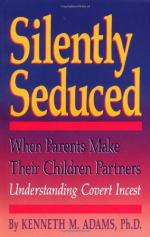|
This section contains 8,546 words (approx. 29 pages at 300 words per page) |

|
SOURCE: “Incest and the Structure of Henry Esmond,” in Nineteenth-Century Fiction, Vol. 34, No. 2, September, 1979, pp. 194-213.
In the following essay, Manning contends that the incest motif permeates Henry Esmond beyond the commonly acknowledged feature of Henry and Rachel's marriage; Manning also theorizes that the author's own subconscious incest fantasy underlies the conflict between desire and social convention in the novel.
The broader incestuous features of Henry Esmond are commonly acknowledged. Henry marries Rachel, who not only has served him as foster mother and called him her son, but who is the biological mother of the younger woman, more appropriate to Henry's age, whom he pursues ardently through most of the story.1 But the incest motif penetrates the novel long before this marriage and its anticipatory images; it drives the story through all its Thackerayan convolutions—including the events of Book II, which critics generally disregard—and impresses itself...
|
This section contains 8,546 words (approx. 29 pages at 300 words per page) |

|


